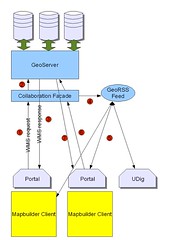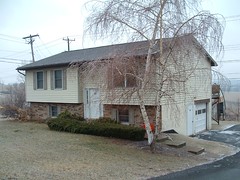OGC Technical Committee Meeting - Edinburgh
I'm sitting here in Edinburgh at the OGC TC meeting. Its day two and I've caught up on my email :-) Day 1 went quite well, we started off by proposing to create a security WG to separate securing your data on the web from digital rights management. With any luck this will lead to fewer flame wars on GeoWanking when people produce open source products which allow you to secure your WMS. I might have upset Graham Vowles from Ordnance Survey by alluding to OS being seen as the spawn of the devil.
There was a brief discussion about the future of SLD with respect to what OWS 4 was up to. This seemed to boil down to SLD is dead long live Symbology Encoding. The only change is to remove UserLayers from SLD and move the binding of a style to a data layer to an annex to WMS, WFS, WCS etc.
On day 2 I'm now sitting in GeoDRM (we're discussing the future of GeoDRM) the debate seems to still be how should we do this, are proxies the way to go or do we need to build directly into the services, which language should we use and how do we integrate geo in to DRM.
I'll post later with some thoughts on the crisis management session and tomorrow's grid workshop.
There was a brief discussion about the future of SLD with respect to what OWS 4 was up to. This seemed to boil down to SLD is dead long live Symbology Encoding. The only change is to remove UserLayers from SLD and move the binding of a style to a data layer to an annex to WMS, WFS, WCS etc.
On day 2 I'm now sitting in GeoDRM (we're discussing the future of GeoDRM) the debate seems to still be how should we do this, are proxies the way to go or do we need to build directly into the services, which language should we use and how do we integrate geo in to DRM.
I'll post later with some thoughts on the crisis management session and tomorrow's grid workshop.


